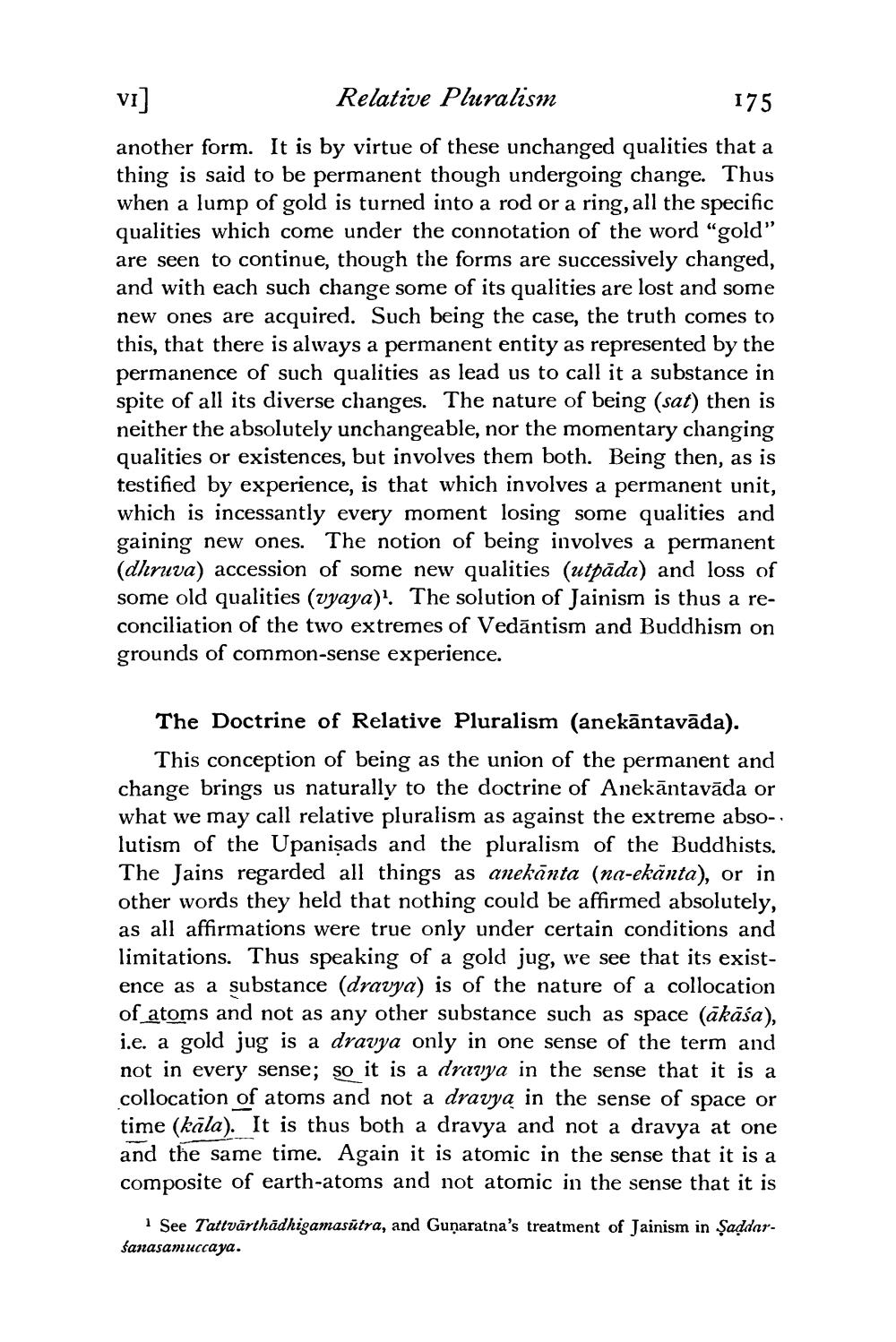________________
VI]
Relative Pluralism
175
another form. It is by virtue of these unchanged qualities that a thing is said to be permanent though undergoing change. Thus when a lump of gold is turned into a rod or a ring, all the specific qualities which come under the connotation of the word "gold" are seen to continue, though the forms are successively changed, and with each such change some of its qualities are lost and some new ones are acquired. Such being the case, the truth comes to this, that there is always a permanent entity as represented by the permanence of such qualities as lead us to call it a substance in spite of all its diverse changes. The nature of being (sat) then is neither the absolutely unchangeable, nor the momentary changing qualities or existences, but involves them both. Being then, as is testified by experience, is that which involves a permanent unit, which is incessantly every moment losing some qualities and gaining new ones. The notion of being involves a permanent (dhruva) accession of some new qualities (utpăda) and loss of some old qualities (vyaya)1. The solution of Jainism is thus a reconciliation of the two extremes of Vedāntism and Buddhism on grounds of common-sense experience.
The Doctrine of Relative Pluralism (anekāntavāda).
This conception of being as the union of the permanent and change brings us naturally to the doctrine of Anekantavāda or what we may call relative pluralism as against the extreme absolutism of the Upanisads and the pluralism of the Buddhists. The Jains regarded all things as anekānta (na-ekānta), or in other words they held that nothing could be affirmed absolutely, as all affirmations were true only under certain conditions and limitations. Thus speaking of a gold jug, we see that its existence as a substance (dravya) is of the nature of a collocation of atoms and not as any other substance such as space (ākāśa), i.e. a gold jug is a dravya only in one sense of the term and not in every sense; so it is a dravya in the sense that it is a collocation of atoms and not a dravya in the sense of space or time (kāla). It is thus both a dravya and not a dravya at one and the same time. Again it is atomic in the sense that it is a composite of earth-atoms and not atomic in the sense that it is
1 See Tattvärthadhigamasutra, and Gunaratna's treatment of Jainism in Şaddar
Sanasamuccaya.




